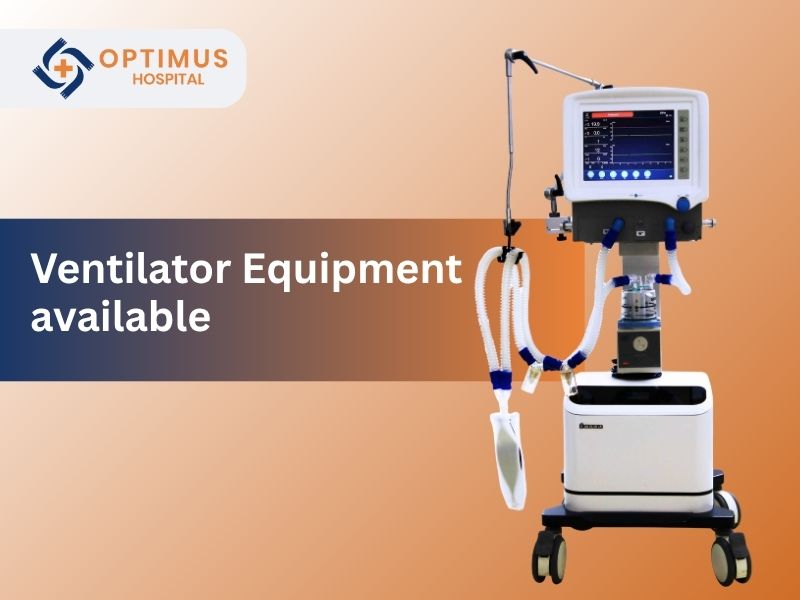Ventilators are life-saving machines. They help people breathe when they cannot do so on their own. In critical situations like COVID-19, accidents, or severe lung diseases, ventilators are essential. But many people—patients, families, even new healthcare workers—don’t fully understand what ventilators do or how the different parts of the ventilator system work.
In this blog, we’ll break down the most important ventilator equipment available, explain their roles, and show how they work together to help save lives. Whether you’re a curious reader, a caregiver, or a hospital administrator, this guide is meant for you.
What is a Ventilator and Why is it Important?
A ventilator, also called a mechanical ventilator or life-support machine, is a device that helps a patient breathe when they are unable to do it effectively on their own.
This may be due to:
-
Surgery under general anesthesia
-
Respiratory diseases like COPD or pneumonia
-
Brain injuries affecting breathing muscles
-
COVID-19 or ARDS (Acute Respiratory Distress Syndrome)
In hospitals, ventilators are used in ICUs (Intensive Care Units), Emergency Rooms, and even in ambulances or home settings in some cases. Choosing the most important ventilator equipment ensures better patient outcomes and safety.
Types of Ventilators Used in Hospitals
Understanding the types of ventilator machines helps us appreciate their purpose in different clinical situations.
1. Invasive Mechanical Ventilators
These are used in ICUs. A tube is inserted into the patient’s windpipe (intubation). It is connected to a machine that controls airflow in and out of the lungs.
Used For:
-
Critically ill patients
-
Major surgeries
-
ARDS or coma patients
2. Non-Invasive Ventilators (NIV)
These use masks or helmets instead of tubes. Ideal for patients who need breathing support but can still breathe partially on their own.
Used For:
-
Sleep apnea
-
COPD patients
-
COVID-19 in moderate stages
3.Transport Ventilators
Smaller, portable devices used in ambulances or while shifting patients between departments or hospitals.
Used For:
-
Emergency settings
-
Ambulance care
-
Short-term support
The Most Important Ventilator Equipment – What’s Inside the System?
Now let’s explore the key ventilator components that make the machine function effectively.
1. The Main Ventilator Unit
This is the heart of the machine. It has digital screens, knobs, and control panels that monitor the patient’s breathing rate, oxygen level, and other parameters. Doctors use this to adjust pressure, volume, and oxygen concentration.
Features to look for:
-
Real-time monitoring
-
Touchscreen interface
-
Alarms for safety
-
Custom modes like CPAP, BiPAP, SIMV
2. Breathing Circuit (Ventilator Tubing)
This is the network of tubes that connects the machine to the patient. It includes inspiratory and expiratory limbs.
Why It’s Important:
-
Delivers clean air and oxygen
-
Removes carbon dioxide
-
Must be sterile and leak-proof
3. Humidifier and Heater
Mechanical ventilation bypasses the nose, which naturally humidifies air. This component warms and moistens the air to prevent the lungs from drying out.
Used For:
-
Long-term ventilation
-
ICU patients
-
Neonatal care
4. Oxygen Source and Blender
The oxygen supply can come from a central hospital line or oxygen cylinders. The blender mixes pure oxygen with room air to deliver the correct concentration.
Why It Matters:
Too much oxygen can damage lungs; too little is unsafe. The blender ensures balance.
5. Bacteria & Viral Filters
Placed at the machine end or near the patient, these filters trap pathogens to prevent infection.
Crucial For:
-
COVID-19 patients
-
Protecting staff from cross-infection
-
ICU sterilization standards
6. Exhalation Valve
This component helps release the patient’s exhaled air. It controls backpressure and ensures smooth airflow.
Key Feature:
Helps maintain the set PEEP (Positive End-Expiratory Pressure) to keep alveoli open.

